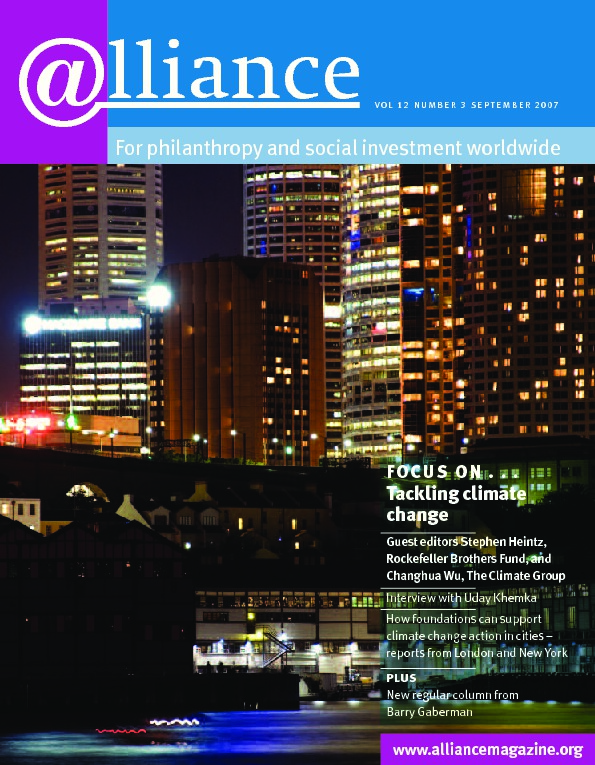The Province of Manitoba, Canada has very cold winters and very hot summers with landscapes ranging from prairie and farmland in the south to boreal forest and lakes in the central region, and tundra in the far north. Climate change is expected to increase the variability of the climate dramatically, with predicted temperature rises of as much as 4-6ºC.
These changes are likely to bring prolonged drought combined with intense storms in our southern regions, loss of much of our boreal forest, and melting permafrost and damage to the polar bear population in the far north. With this in view, Manitobans committed themselves to a Climate Change Plan in 2002.
Since then, Manitoba has introduced a range of measures including significant investments into energy efficiency and diversifying the already renewable energy supply (96 per cent of its electricity is hydro-electric power) into wind, geothermal and bioenergy production. These have brought economic and environmental benefits. The Province has saved close to 350 megawatts of power and reduced greenhouse gas emissions in Manitoba by 773,000 tonnes as a result of energy efficiency, with plans to double that amount over the next ten years.
Manitoba’s rural economy is also benefiting from clean energy alternatives. A biofuels mandate and tax incentives have resulted in increased ethanol production as well as new community-based biodiesel plants. This is expected to lead to reductions in greenhouse gas emissions of 400,000 tonnes and future savings of $200 million on gasoline imports as well as creating local markets for lower grade grains. In a province where there were no wind monitoring stations just a few years ago, 100 megawatts is now being produced in rural Manitoba, with 1,000 megawatts of capacity to be developed over the next ten years – resulting in more clean power, added income for farmers and local economic development. In addition, Manitoba has become a leader in North America on ground source heat pump (geothermal) installations, providing the lowest cost heating and cooling systems on the continent.
Manitoba has signed an Accord with First Nations communities to support sustainable land planning in one of the largest untouched tracts of boreal forest in North America, located on the east side of Lake Winnipeg. In addition, sustainable land planning will support the nomination of part of this beautiful area as a UNESCO World Heritage site. This initiative is the one area where there is also support from the philanthropic sector. In addition to government funding, the Canadian Boreal Initiative is working with communities in the area through the support of Pew Charitable Trusts, the William and Flora Hewlett Foundation and the Lenfest Foundation. The Province has also brought in new legislation to protect water and increase watershed planning and to protect polar bears.
While Manitobans have achieved much in a short time, there is much more to do.
Manitoba is updating its climate plan and bringing in new legislation to reflect previously announced targets to reduce emissions below 1990 levels by 2012. Measures will include phasing out Manitoba’s last remaining coal plant; requiring emission reductions from large landfills; entrenching green building standards; greater use of biofuels and hybrid buses, and incentives for low-emitting vehicles. In the agriculture sector, biofuel production, lowering energy use, supporting sustainable farm practices and wetland restoration, and creating opportunities for carbon credits will help lower farm costs, diversify the farm economy, and lower emissions.
Underpinning all this work is the belief that taking action on climate change will not only help reduce global greenhouse gas emissions but also help us to prepare for the impact of climate change on our landscape and environment. We also believe that investments in climate action today will bring the benefits of a more sustainable and green economy for future generations.
The philanthropic community has a concrete role to play in supporting the transition to a green economy – from supporting local renewable energy projects to sustainable agriculture projects to walking and biking trails, and, of course, sustaining waterways and natural areas. It is the partnerships between communities, governments, businesses and philanthropists that will lead that transition and make it a reality across North America.
Jane Gray, Climate & Green Initiatives Branch, Manitoba Science, Technology, Energy and Mines. Email jane.gray@gov.mb.ca






Comments (0)